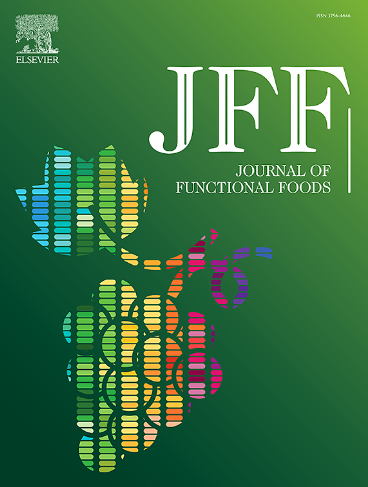微量元素锌与慢性肝病的相互作用:静水流深
IF 3.8
2区 农林科学
Q2 FOOD SCIENCE & TECHNOLOGY
引用次数: 0
摘要
锌是一种不可或缺的微量元素,在调节人体新陈代谢、免疫功能和细胞信号传导方面发挥着重要作用。锌平衡是多种病理生理过程(如细胞凋亡、抗氧化、抗炎症和免疫反应)不可或缺的元素,也是肝脏正常功能的基础。锌平衡紊乱与各种慢性肝病(CLD),尤其是代谢相关性脂肪肝(MAFLD)的发生、发展甚至恶化有关。有趣的是,血清锌水平与慢性肝病之间的相互作用仍存在争议。本综述的重点是全面阐明血清锌水平与 CLDs 之间的关系,并阐明锌在肝脏中的生理功能。更重要的是,本综述强调了服用锌可能成为 MAFLD 临床治疗的一种潜在治疗策略。本文章由计算机程序翻译,如有差异,请以英文原文为准。

The interplay between trace element zinc and chronic liver diseases: Still water run deep
Zinc is an indispensable trace element that plays a position in regulating human metabolism, immune function, and cell signaling. Zinc homeostasis is indispensible for multiple pathophysiological processes, such as apoptosis, antioxidation, anti-inflammation, and immune responses, accounting for normal function with respect to the liver. The disturbance of zinc homeostasis is associated with the development, progression or even deterioration pertaining to various chronic liver diseases (CLDs), particularly metabolic-associated fatty liver disease (MAFLD). Interestingly, the interplay between serum zinc levels and CLDs remains in controversy. The focus of this review is to comprehensively elucidate the relationship between serum zinc levels and CLDs and shed light on the zinc's physiological function in liver. More importantly, this review highlights the administration of zinc may become a potential therapeutic strategy in the clinical management of MAFLD.
求助全文
通过发布文献求助,成功后即可免费获取论文全文。
去求助
来源期刊

Journal of Functional Foods
FOOD SCIENCE & TECHNOLOGY-
CiteScore
9.60
自引率
1.80%
发文量
428
审稿时长
76 days
期刊介绍:
Journal of Functional Foods continues with the same aims and scope, editorial team, submission system and rigorous peer review. We give authors the possibility to publish their top-quality papers in a well-established leading journal in the food and nutrition fields. The Journal will keep its rigorous criteria to screen high impact research addressing relevant scientific topics and performed by sound methodologies.
The Journal of Functional Foods aims to bring together the results of fundamental and applied research into healthy foods and biologically active food ingredients.
The Journal is centered in the specific area at the boundaries among food technology, nutrition and health welcoming papers having a good interdisciplinary approach. The Journal will cover the fields of plant bioactives; dietary fibre, probiotics; functional lipids; bioactive peptides; vitamins, minerals and botanicals and other dietary supplements. Nutritional and technological aspects related to the development of functional foods and beverages are of core interest to the journal. Experimental works dealing with food digestion, bioavailability of food bioactives and on the mechanisms by which foods and their components are able to modulate physiological parameters connected with disease prevention are of particular interest as well as those dealing with personalized nutrition and nutritional needs in pathological subjects.
 求助内容:
求助内容: 应助结果提醒方式:
应助结果提醒方式:


